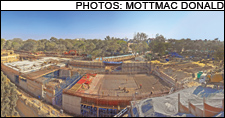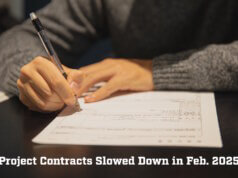 A metro system is a basic requirement in almost all Indian cities, including Tier 1 & 2. The first stage is building the infrastructure and the second stage is integrating the metro with other forms of transport, to allow people to use more than one mode of transport seamlessly. Mohan Gupta, Sub-divisional Manager – Railways and Metros in India, Mott MacDonald, analyses India’s metro market.
A metro system is a basic requirement in almost all Indian cities, including Tier 1 & 2. The first stage is building the infrastructure and the second stage is integrating the metro with other forms of transport, to allow people to use more than one mode of transport seamlessly. Mohan Gupta, Sub-divisional Manager – Railways and Metros in India, Mott MacDonald, analyses India’s metro market.
Over the past decade, India has embarked on a frenetic rate of metro development. In 1984, Kolkata was the first city in the country to begin operating a metro rail system. Since then, the country has continued on a major programme of metro construction across many of its major cities.
Delhi and Bangalore lead the drive for metro development, while Mumbai, Hyderabad, Jaipur, Kochi and Chennai all have metros under construction. Kolkata is currently constructing its second phase, while construction is expected to begin soon in Ahmedabad. Elsewhere, detailed project reports are being prepared in Patna, Bhopal, Indore and Chandigarh.
Since the first beginnings in Kolkata, Delhi has taken the lead in the design of metros and major underground works in India. Delhi Metro Rail Corporation opened its first line, Phase 1, Line 1, in December 2002. New Delhi was the first city to invite global companies to design and build metro lines and today, the Indian capital boasts six metro lines, as well as an airport express link, totalling 193km of line. The most recent opening occurred on Line 6 in January 2011. This constitutes the world’s largest rail network to have been completed in such a short space of time.
Mott MacDonald is involved in many of the metro projects underway in India. Our Indian staff works with specialists from around the globe, bringing international experience and best practice to local projects. Previously, we have received support from our UK, Czech Republic, Hong Kong and Singapore offices. For example, on DMRC Line 2 corridors, MC1A and MC1B, we created a team of around 150 people pooled from these locations. Staff numbers have increased as Indian metro expansion continues apace.
Constraints
Most Indian metro tunnels are bored by tunnel boring machines (TBM), but in many cases only 20-30 per cent of the total length will be underground. The remainder will be at grade and/or elevated, which can entail less involved technology. Underground sections are more challenging and around 10 times costlier than the elevated equivalent.
India has also learnt the lessons of the constraints associated with small-diameter metro tunnels. The broad-gauge tracks used in India involve 1.4m wheel centres and tunnel diameters of around 5.7m, which results in large spacious trains suited to the country’s densely inhabited cities.
But with so much tunnelling and the subsequent need for tunnel engineers, how is India going about training them? The norm for a civil engineer working in tunnelling is to learn on the job, supported by local and international expertise if working for an international organisation. Local staff undergoes structured training at the same time in order to become certified. Outside the work environment, some schools are starting to offer specialised courses in tunnelling and underground engineering. Health and Safety awareness is also picking up. All contracting firms now have their own safety programmes.
 Procurement
Procurement
Tunnel procurement models in Delhi are all-inclusive. DMRC, a special vehicle set up by central and state government, primarily follows the procurement models of design and build, design build operate (DBO), build operate transfer (BOT) and build-only bases.
DMRC’s involvement in Indian metros extends beyond the capital, acting as prime consultant to corporations in other cities. It prepared a detailed project report for the first phase of Bangalore Metro and has also worked with Chennai Metro Corp, as well as in Hyderabad. Developer Larson and Toubro is designing and building the Hyderabad metro and will be the owner for a concessionary period that will see it operate under local and state government auspices.
In Mumbai, local government is trying to procure on a BOT basis for some of the lines. This is a favoured procurement method as the developer is responsible for the finance and the corporation is not required to borrow from banks. However, viability is a concern, as any developer who comes on board a project has to ensure that their investment is recouped within a limited time period. So there are various procurement sub-modes being offered.
A metro system is seen as a basic requirement in almost all Indian cities, whether they are Tier 1, such as Kolkata, Chennai, Delhi and Mumbai, or Tier 2 like Hyderabad, Ahmedabad, Bhopal and Indore. The first stage is building the infrastructure, the second stage integrating the metro with other forms of transport to allow people to use more than one mode of transport seamlessly. That is how transportation in the urban environment becomes more efficient and user-friendly. For example, Delhi has a city bus system, another railway system and a monorail under development.
It is also interesting to look at the rise of other metro developments, such as in Gurgaon, southwest of Delhi, where a private developer is building a metro around its office and residential complexes. Privately financed, with some financial aid from the state government, the completed metro will be privately run and owned but open to the public. Although using different systems and operating as a distinct entity, the developer’s metro will be joined to the Delhi metro network, enhancing the city’s infrastructure and allowing both the owner and DMRC to reap the benefits.
Gaining experience
So how has India acquired the tunnelling skills required for such ambitious metro infrastructure growth in such a short space of time? That all the know-how has been imported, mainly from the West, should come as no surprise. When Delhi started Phase 1 in 2000-2001, employers required designers and contractors to have had prior international experience, which effectively meant that only foreign companies with global tunnelling expertise were eligible to design and build these facilities.
They also insisted that manufacturers and equipment suppliers establish assembly facilities in Delhi in order to trial the transfer of skills to local people. Also, as part of the procurement process, engineering consultants, service providers and suppliers working in India were required to hire and train local people.
These requirements still stand, however owners now allow the participation of local contractors to participate and generate competition. Nonetheless, the supply of specialist technology remains open to global suppliers. Yet rapid progress has been made where construction is concerned. In 2000, many Indian contractors were sub-contractors of overseas contractors. Today, they are main contractors.
Problems with metro construction
A country as resource-poor and populous as India is likely to face enormous challenges in building new infrastructure. There are three main problems the country has to face:
Planning: The need for adequate planning becomes apparent during the timeline. Short timeframes on metro developments are common.
Increasing competition: in the early days of metro development, there were many overseas experts on hand. But with the development of the home market, more local contractors are participating in the bid process. Because procurement in India is more price-based, there is a danger that the appointed contractors do not have sufficient experience.
The urban fabric: Tunnelling usually takes place 16-20m underground. Contractors face huge challenges when creating large, deep excavations for stations as these can cause disruption to the already overcrowded environment. This also applies to elevated sections in cities with high traffic densities as lanes have to be closed during construction.
Conclusion
Moving forward, India has to make sure it is looking to design for maintenance. There is a danger that consideration for maintenance is overlooked as projects progress. Asset life is 120 years and from the start of a project a maintenance design plan needs to be in place












[…] India should pattern metros for upkeep | India's initial NewsPortal … […]